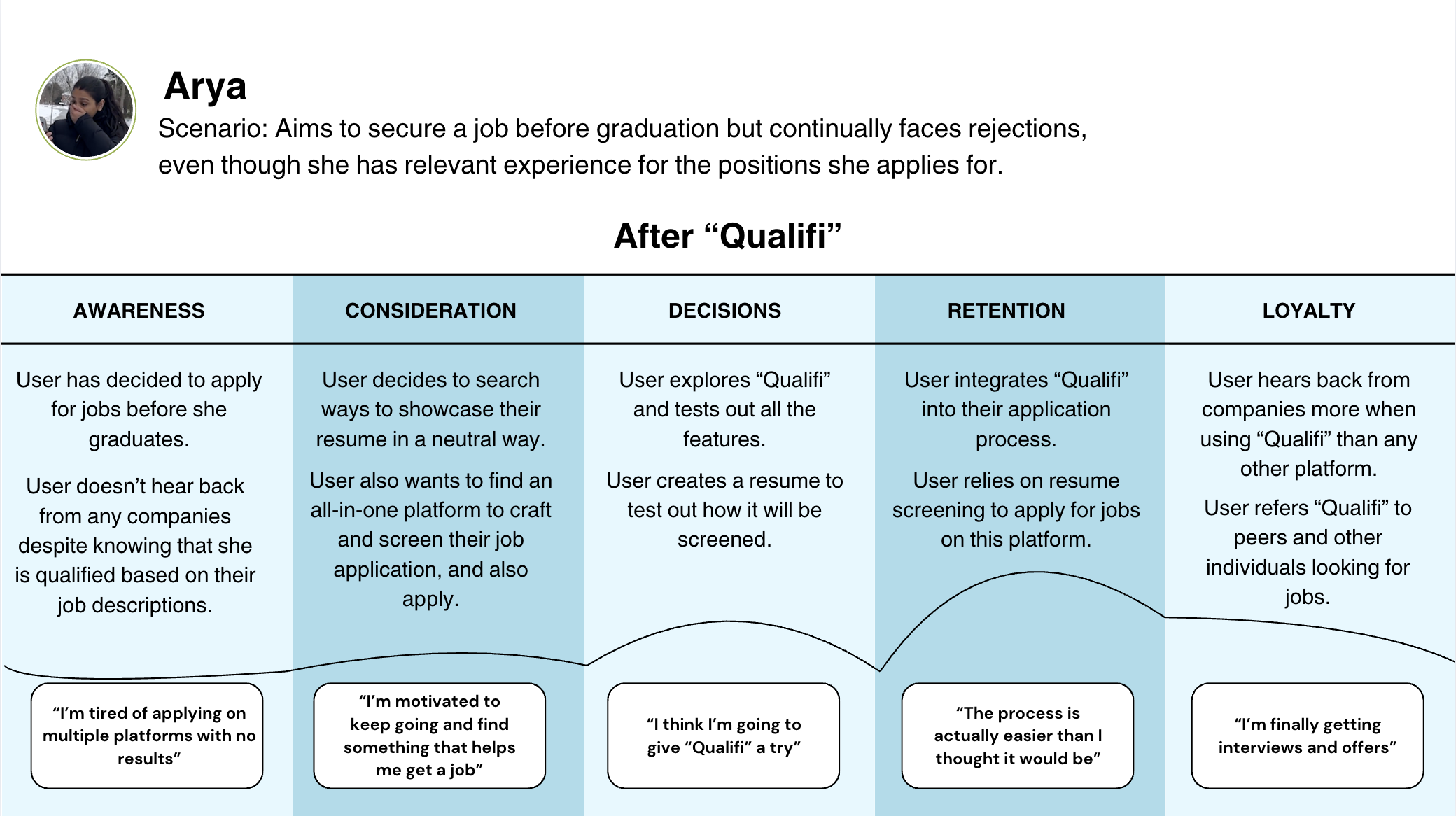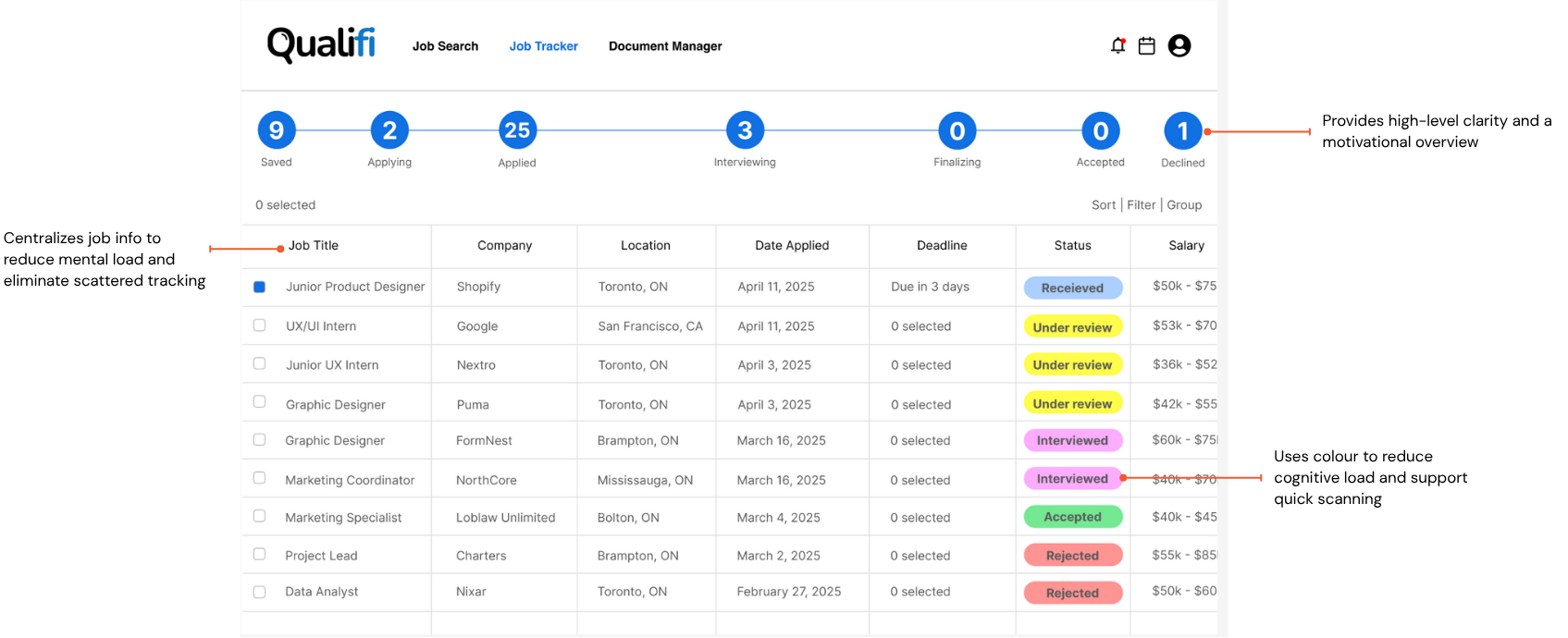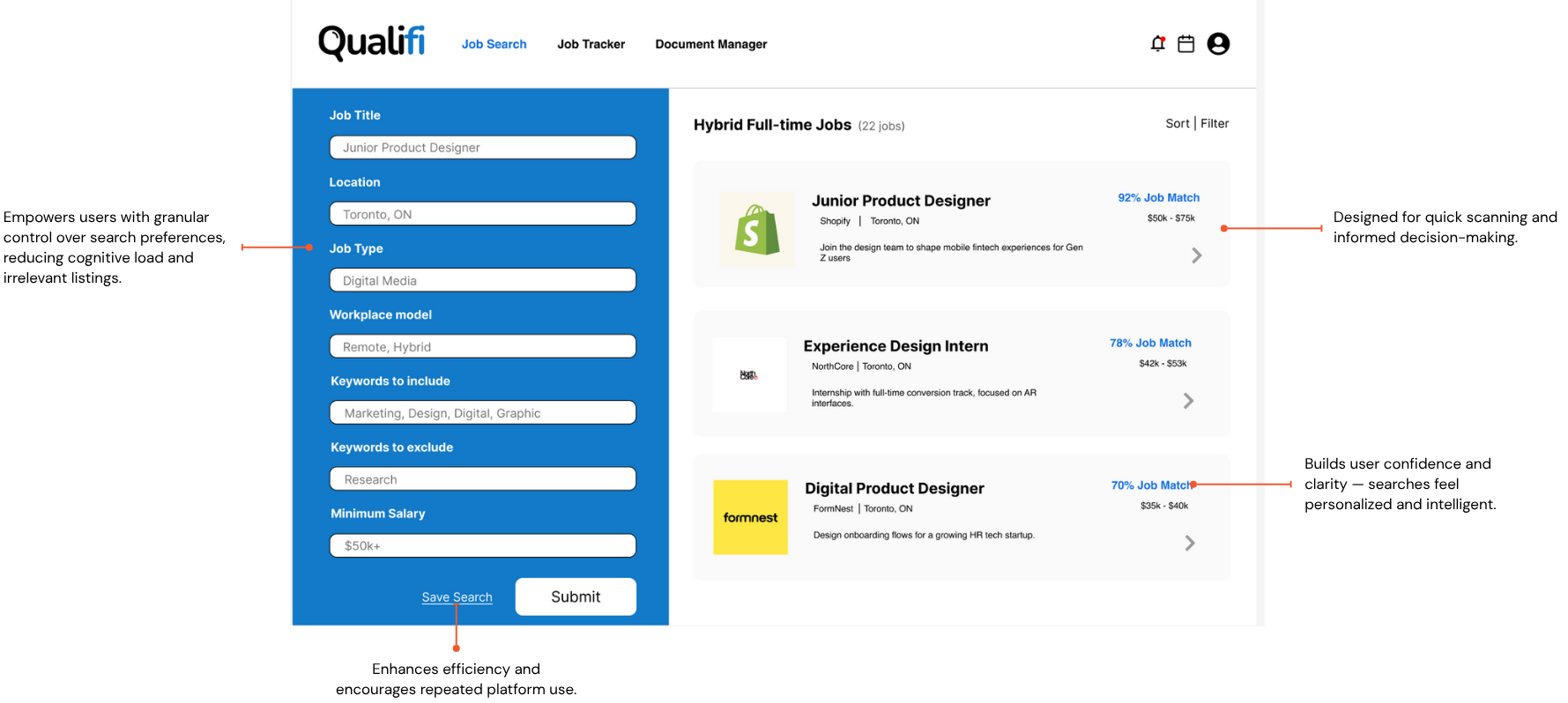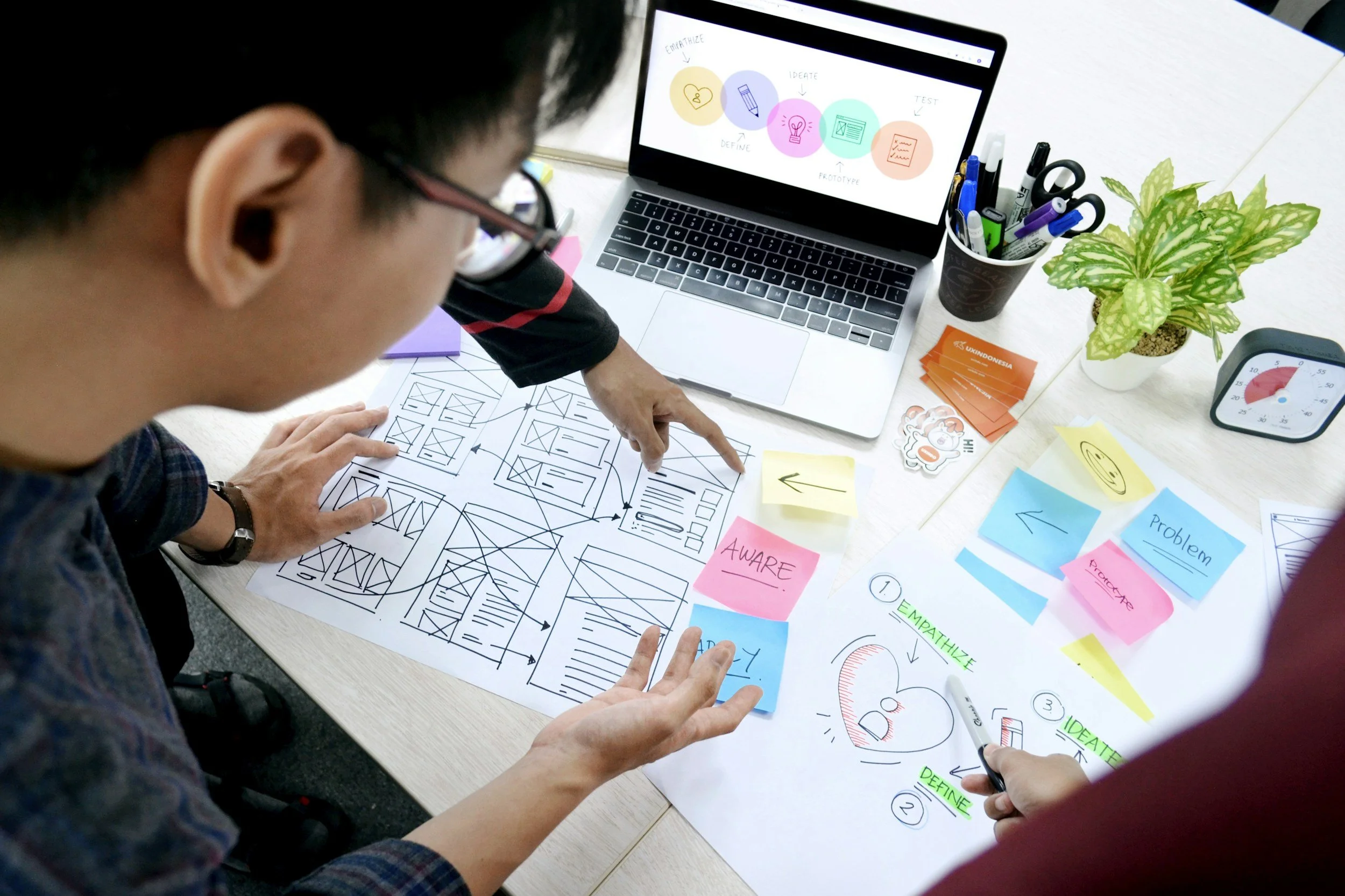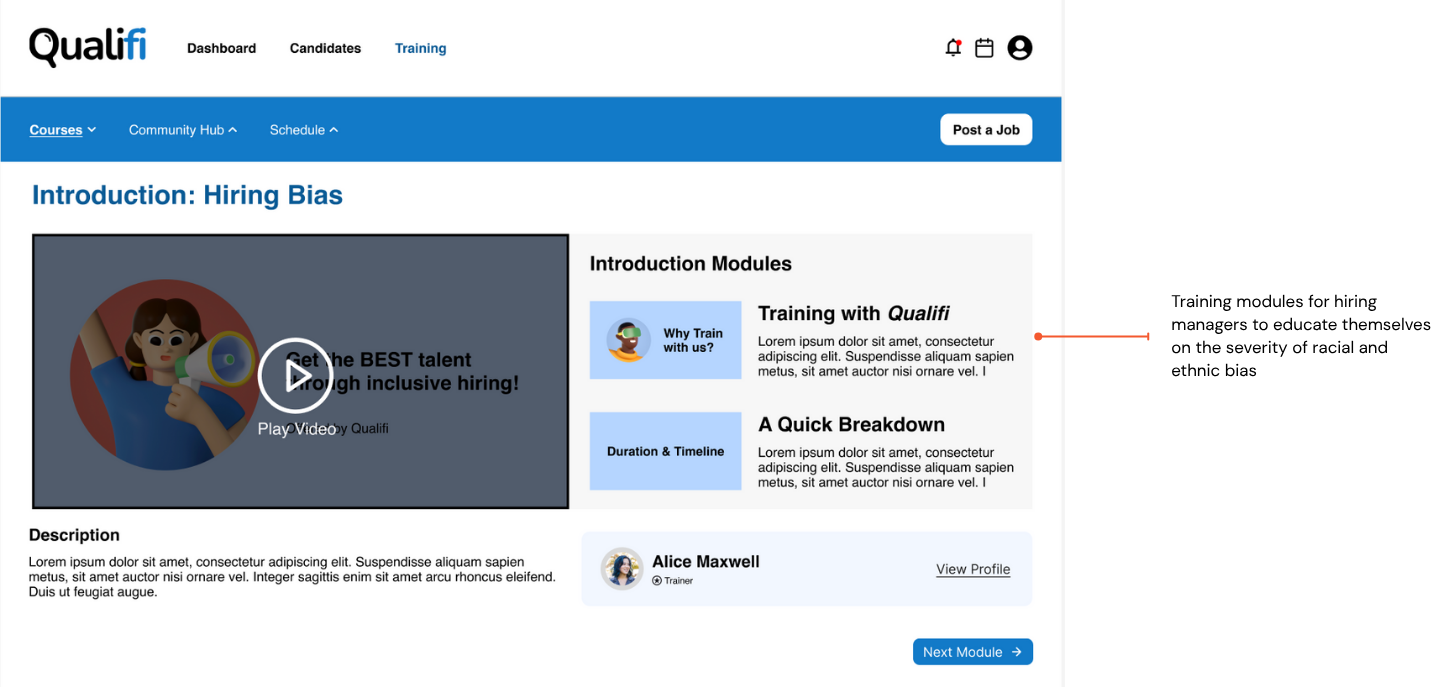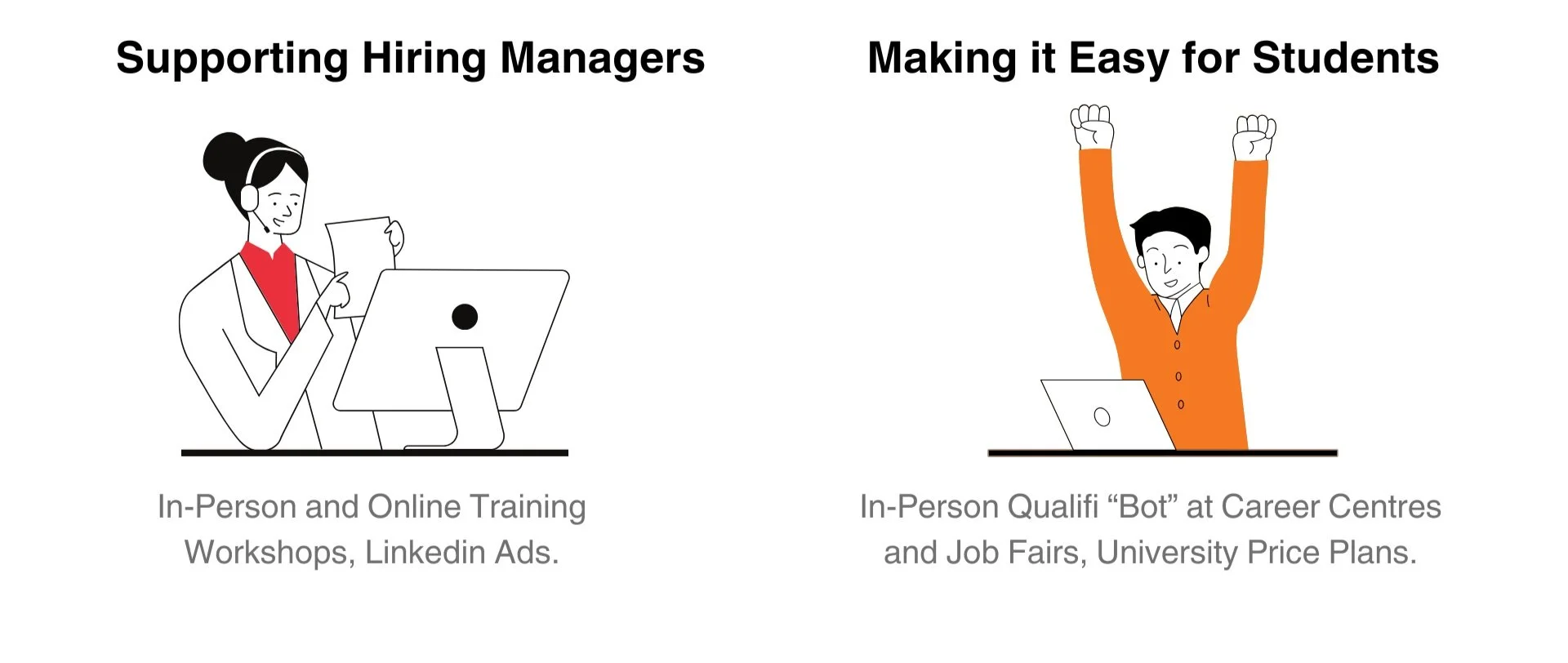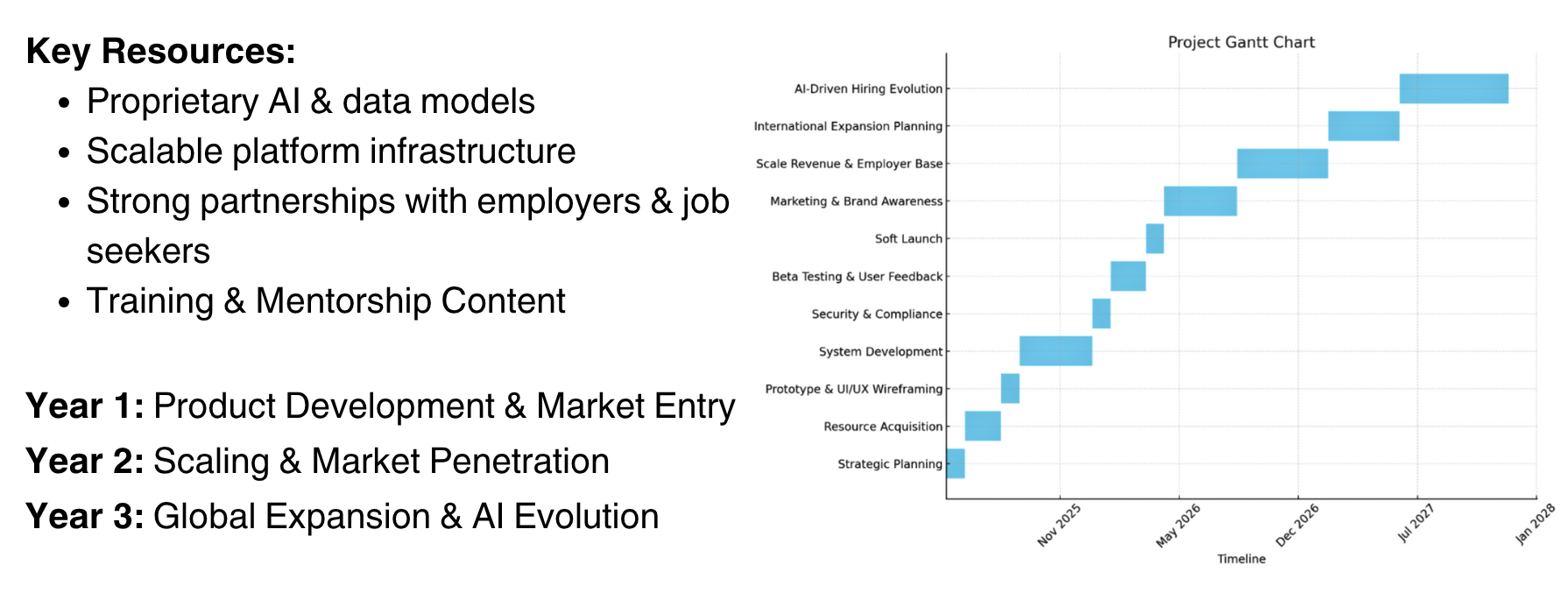Capstone ProjectWe are targeting the clear racial and ethnic bias present throughout the job application and recruitment process that may prevent companies from hiring the most qualified candidate. Traditional platforms don’t offer intelligent, bias-aware guidance that benefits both sides.
Problem Space
Solution
All-in-one hub to anonymize the job application process and limit bias, helping employers find the most qualified candidate while ensuring that job seekers are recognized for their skills.
An AI-powered hiring agent embedded within Qualifi to streamline collaboration between recruiters and candidates
Role
Product Designer
Team-based Project
January 2025 - April 2025
The Starting Point
For this capstone project, the given prompt required all teams to design a product based on a form of bias. My group and I chose to focus on racial & ethnic biases in the hiring application journey.
Racial bias has become covert now¹
Resumes of minority groups get 30-50% fewer callbacks²
Bias in job hiring most commonly occurs during the initial screening stages³
A 3-theory framework that includes taste-based, screening, & complementary production discrimination⁴
People rarely see themselves as part of the problem, overrating their organizational inclusivity⁵
In 2004, a formative study found that applicants with white-sounding names on their resumes received 50% more callbacks than those with distinctively Black names.
Lack of communication
Unrealistic demands
Customizing applications
Redundancy
Employer’s Market
JOB SEEKER PAIN POINTS
HIRING MANAGERS PAIN POINTS
Too many applicants
Fake resumes
Slow hiring cycles
Disparities between departments
Addressing cultural/language barriers
Persona & Customer Journey Map
This customer journey map illustrates the user experience of Arya, a job-seeking student, as she navigates her path after using “Qualifi”. It outlines her emotional journey, actions, and decision-making process across five key stages of interaction with the product.Pain Point Addressed: Qualifi fills a key gap in Arya’s job search by offering transparency, effective resume screening, and a streamlined application process.
Emotional Shift: From frustrated and demotivated to confident and empowered.
Retention Insight: Once the platform proves its value (real responses from employers), Arya becomes a loyal user and recommends it.
Job Seekers – Key Features
Early sketch of the resume analysis tool, focusing on structure, feedback layout, and AI edit flow.Initial layout exploring how users can visually track and manage application statuses.Wireframe showing filtered search functionality and job card structure for quick scanning.The high-fidelity screens for Qualifi (job seekers) were designed to create a seamless and empowering job application experience for students like Arya, addressing key pain points in resume optimization, job discovery, and application tracking.
The Resume Scanner uses AI to provide real-time, bias-aware feedback and resume improvement suggestions, with a clear score indicator and upgrade option for deeper edits.
The Job Tracker provides a visual progress bar, colour-coded status labels, and sortable job listings with salary transparency, enabling users to stay organized and motivated throughout their job search.
The Job Search screen includes advanced filters, match percentage indicators, and clear job cards to personalize and streamline the discovery process.
Automated initial resume screening and flagged bias-prone language in job descriptions.
Generated bias-free candidate shortlists, with transparent rationales behind each recommendation.
Suggested structured interview questions aligned with role requirements.
So what did the users say?
85% appreciated the “all-in-one” nature of the dashboard, especially having candidate data, resumes, and application status in one place.
91% of users said the design felt intuitive and required little to no onboarding
3 out of 5 testers initially missed the bias detection section until prompted, indicating poor visual prioritization.
70% of users clicked on “Reviewed” or “Contacted” candidate stats as their first interaction, confirming the importance of interactive analytics in recruiter workflows.
Users described the resume tracking feature as “a time-saver” and “exactly what I need to stay organized when hiring for multiple roles.
Hiring Managers – Key Features
This high-fidelity dashboard prototype for Qualifi provides recruiters with a weekly overview of key hiring metrics, including total applicants, active job postings, and AI-detected bias in applications.
The interface features a candidate tracking table segmented by job title and hiring stage, as well as a “Recently Viewed” resume section for quick access to past applicants. Interactive links and clean visual organization support a streamlined and efficient recruitment experience.
The hiring manager’s portion of the high-fidelity prototype places a strong emphasis on ensuring they have all the necessary resources to eliminate racial and ethnic biases in their hiring practices. With that, the introduction of anonymizing applicant cases, participating in training modules, and reviewing resumes that hide any ethnic or racial identification of candidates are all ways Qualifi tackles this unfair treatment in hiring.
This UX project was driven by Qualifi’s business need to improve recruiter efficiency and support bias-free hiring.
With hundreds of applicants per job posting, hiring managers needed a streamlined interface to review, filter, and track candidates at different stages.
Our goal was to design a dashboard that aligned with these needs, ultimately helping teams make faster, fairer hiring decisions while supporting key company goals like time-to-hire reduction and increased applicant transparency.
The business of it all…
Growth Strategy
Our growth strategy combines outreach, education, and accessibility. We’ll run in-person and online training workshops for recruiters, launch targeted LinkedIn ads, and introduce a branded Qualifi “Bot” at job fairs and campus career centres.
Special university pricing plans make it easy for students to access the platform, while simplified tools help hiring managers make faster, fairer decisions.
Our strategy begins with our pricing plans for employers and job seekers.
Employers can take the standard or enterprise premium plan based on their hiring needs.
Whereas job seekers who are on a freemium model can choose to buy the premium plan, however, we are also targeting educational institutions to distribute premium plans to current students.
Pricing Plans
Feasibility & Timeline
Our timeline spans a total of 36 months, which includes product development, testing, and launch, as well as scaling and exploring global expansion.
Our model remains dependent on the state of AI during that time and our partnerships with employers and job seekers.
Learnings & Outcomes
One of our biggest takeaways from this project was just how easy it is for bias-reduction efforts to get buried in the interface. While we had designed a section to visualize bias detection, many users either missed it completely or didn’t understand what it was showing. That was a powerful insight: users can’t value what they don’t notice.
We learned that bias mitigation needs to be more than a background process—it has to be visible, intentional, and explained in ways users actually connect with. People wanted transparency. They wanted to know how the system detects bias, where it's acting, and what they can do with that information. A small donut chart and a percentage weren’t enough.
That realization reshaped our approach. We began rethinking how to surface ethical design features as first-class citizens, whether through clearer labels, tooltips, onboarding, or even resume anonymization.
In short:
Bias reduction isn’t a feature. It’s a responsibility—and one that needs to be clearly communicated.
This experience made us more thoughtful not only about what we design, but how we tell the story of that design through the interface.



